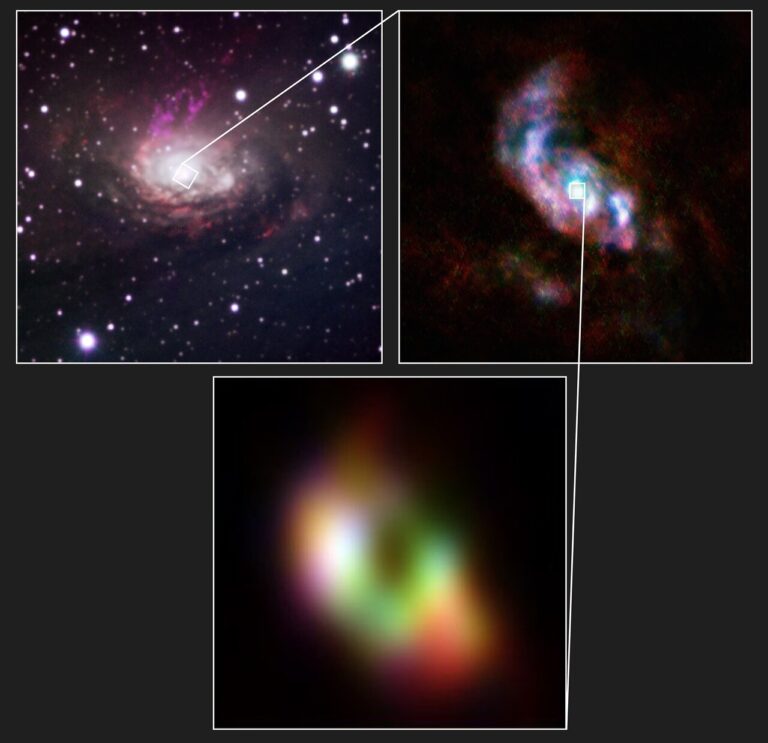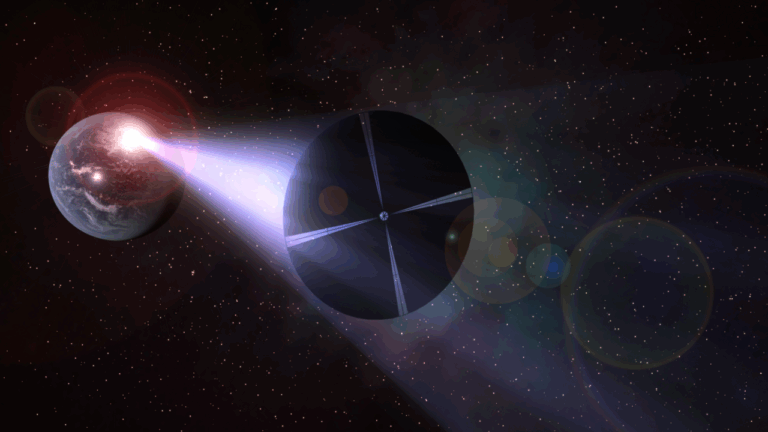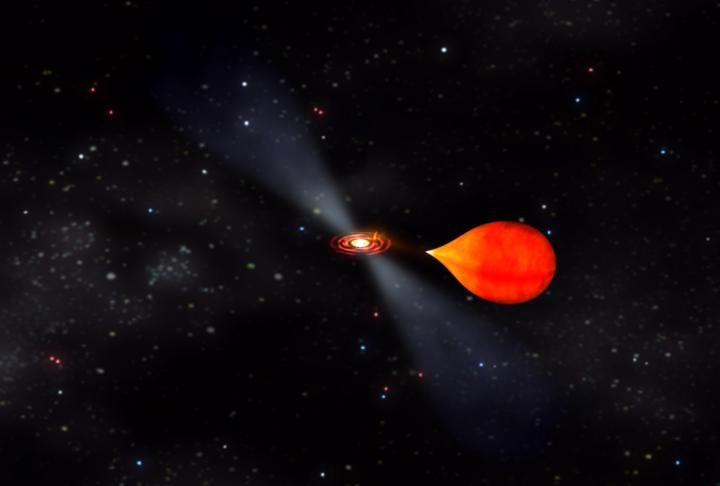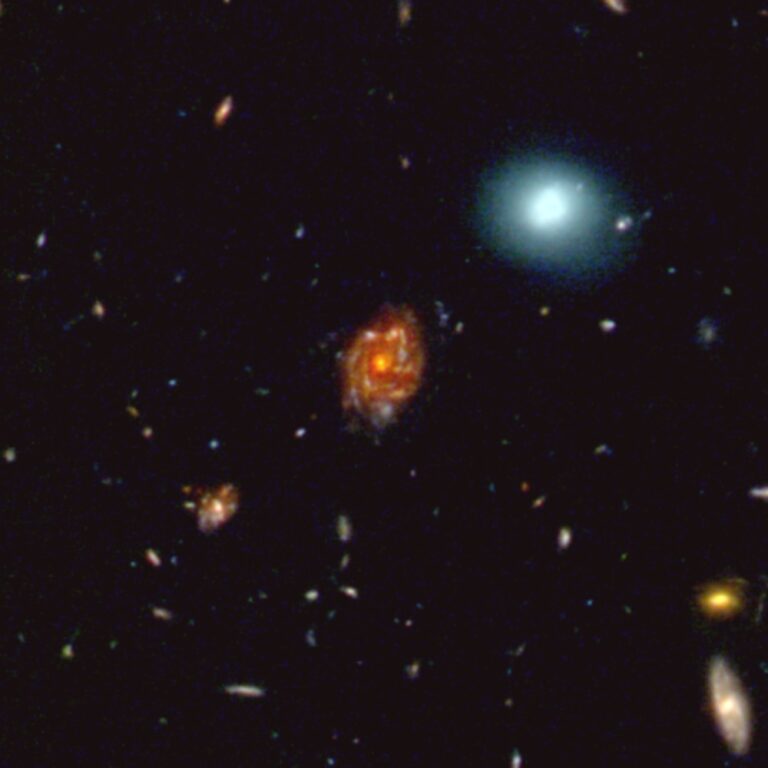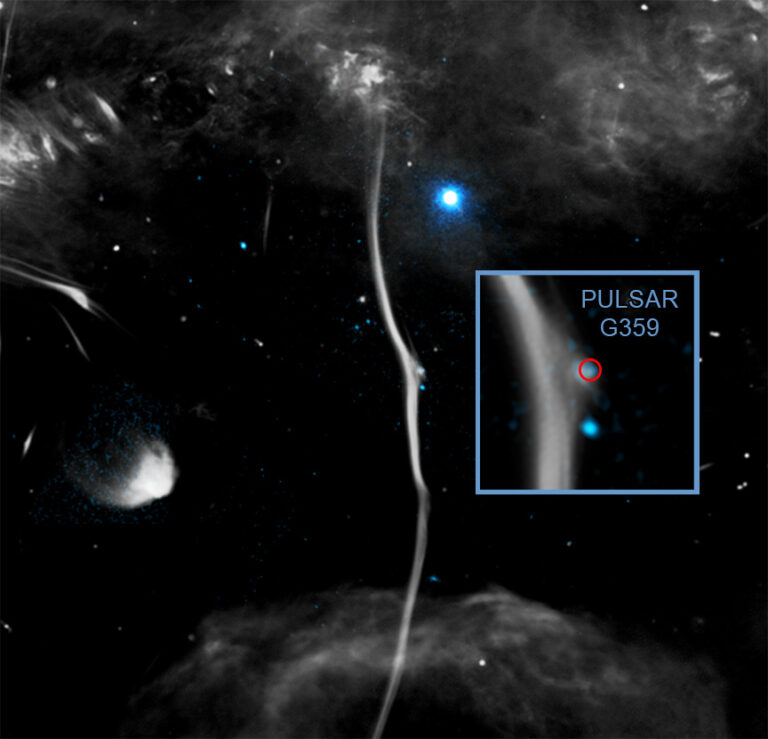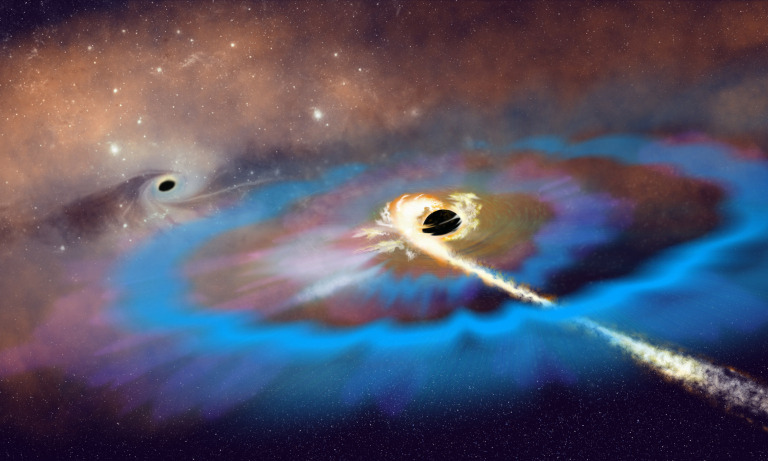
Key Takeaways:
- Astronomers have detected the first tidal disruption event (TDE), designated AT2024tvd, occurring 2,600 light-years outside its host galaxy's core, exhibiting intense, rapidly evolving radio signals.
- The unusual off-center location of AT2024tvd provides the clearest observational evidence to date for wandering supermassive black holes, potentially ejected during galaxy mergers or originating from previously merged galaxies.
- Follow-up observations revealed two powerful radio outbursts at 131 and 194 days post-discovery, with the latter showing an unprecedented rapid evolution and well-sampled rise and fall, marking the brightest and fastest-evolving radio emission from an off-center TDE.
- This discovery challenges existing theoretical models of TDEs and necessitates a reevaluation of search strategies, encouraging broader surveys beyond galactic centers to find potentially numerous unseen wandering supermassive black holes.
For the first time, astronomers have detected intense, fast-changing radio signals from a tidal disruption event, dubbed AT2024tvd, located outside its galaxy’s core. Now, astronomers are trying to understand what the black hole is doing 2,600 light-years from where they expected it to be, what its strange signals mean, and whether there are more off-kilter events like it happening across the cosmos.
Supermassive black holes anchor nearly every large galaxy in the universe. These popular cosmic supervillains, known for their invisibility and inescapably strong grips, are friendly enough if you keep your distance. But venture too close and they can tear you to pieces — literally.
Occasionally a star wanders near a supermassive black hole and is pulled in so violently that it’s ripped to shreds in the process. The stellar debris heats up as it spirals inward, producing intense radiation that we can sometimes detect from Earth. Astronomers have seen around 200 of these phenomena, called tidal disruption events, but until now, they always occurred in the center of a galaxy. That is, after all, where supermassive black holes almost always reside. Finding one snacking so far away from a galaxy center made astronomers look even closer, and they were in for more surprises.
The discovery was published Oct. 13 in The Astrophysical Journal Letters.
Intruder alert
The supermassive black hole was silently slumbering until suddenly it lit up in visible light. Yuhan Yao, a postdoctoral fellow at the University of California-Berkeley, and her team found it using the Zwicky Transient Facility, which scans the sky for sudden flashes.
At first, it looked like a run-of-the-mill tidal disruption event — nothing out of the ordinary, until follow-up observations revealed its off-center location.
There is however a supermassive black hole in the middle of the host galaxy; it shows up in radio observations too, though much more subtly. And Itai Sfaradi, a postdoctoral researcher at the University of California-Berkeley who led radio follow-up observations, says the fact that AT2024tvd was deflected so far from the galaxy’s core may imply that there’s another supermassive black hole lurking in the same galaxy.
Sfaradi says the black hole that unleashed the tidal disruption event likely got there one of two ways: Either it was flung out of the core of the galaxy as a couple of other galaxies merged with it, or it originated in a different galaxy that merged with another to form the current one.
Astronomers have speculated for years that galaxy mergers could sling supermassive black holes away to the outer regions of galaxies. But with only a handful of them detected there, evidence supporting the hypothesis has been sparse. AT2024tvd may be the clearest confirmation of wandering supermassive black holes yet, indicating that the universe could be home to many more unseen giants that remain hidden until a hapless star crosses their path.
Radio racket
Follow-up observations revealed another oddity: a pair of powerful radio outbursts, one detected 131 days after the initial discovery and an even stronger one after 194 days.
“This is truly extraordinary,” Sfaradi said in a press release. “Not only is this the first time we’ve observed such bright radio emission from a tidal disruption event happening away from a galaxy’s center, but it’s also evolving faster than anything we’ve seen before.”
It only takes a couple of hours for a supermassive black hole to shred a star. You can visualize the process by imagining wading in the ocean and suddenly sinking down after reaching a sharp drop-off. As you approach a supermassive black hole, the drop-off of its gravitational well is outrageously steep — so extreme that the atoms on the tip of your toe (or the edge of a star) would plunge down before the rest of you could follow intact! You’d be spaghettified, strung out into a stream of atoms.
That stream would encircle the black hole like a necklace, moving ever closer with each orbit. Falling in is a long and messy process — black holes aren’t the tidiest eaters, and they can emit backwash (called an “outflow”) that creates shock waves which in turn produce radio emission when they slam into surrounding gas. Those emissions may happen soon after the star disintegrates or months later.
Sfaradi says AT2024tvd’s second radio emission may have been another outflow or the same one colliding with another dense patch of gas around the black hole.
While double radio flares have been seen in a handful of tidal disruption events before, astronomers have never had such a complete view of the process.
“What’s exciting about this one is how well-sampled the data are,” Yvette Cendes, an assistant professor at the University of Oregon who analyzed the radio data, tells Astronomy. “We’ve seen second brightenings before, but this time we watched the rise and fall in real time.”
The discovery may encourage researchers to rethink how they search for such events. Until now, many surveys that look for cosmic flashbulbs have focused on galactic centers, assuming that’s where the action is. Part of the reason no one had ever found an off-center tidal disruption event is that “no one was looking for them,” Cendes says. “Now that we’ve found one, astronomers will start looking for and probably finding more. If you find something once, it’s much easier to find it again.”
Finding other examples of off-center tidal disruption events could help astronomers develop better theoretical models. “None of the current models can account for this behavior we’re seeing,” Cendes says. “It’s clear that the picture is more complex than we thought, which is both frustrating and fun. It’s part of what makes it exciting!”

